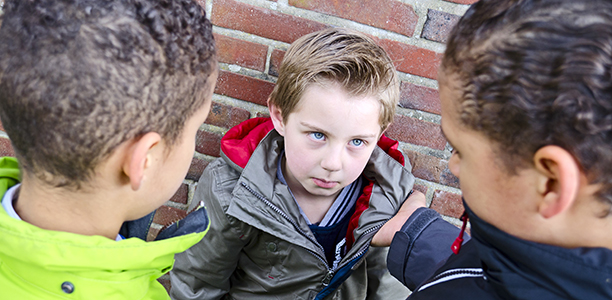Schoolyard Bullying: Dr. Ufondu says “It’s COOL To Be Different!”
Bullying. A word that has only gained in intensity and power despite its frequent use. Everyone is outraged by bullying. It’s the hot topic at parent meetings and “zero tolerance for bullying” has become every school’s catch phrase.
And rightly so. Consistent bullying is intolerable and can lead to horrific situations and leave lifelong wounds, especially on the heart of a small child, unequipped to make sense of a situation that would baffle most adults. We have all read the stories, horror stories really, of children and teenagers who take their own lives as a result of prolonged, systematic bullying.
We read these stories and try to convince ourselves that these things couldn’t touch us on such a devastating level.
We tell ourselves that a child who is bullied so badly that they take their own life must not receive the necessary love or attention at home to overcome the bullying by their peers. A child who would take their own life must not have really been taught how great their worth was, how precious and irreplaceable they were. However, if we are honest, we know that this is not always the case. It’s far more complex than that. A child who is terrorized daily on the playground may have vulnerabilities in other areas already and may not have the capacity to cope with or process the trauma they are enduring.
Sometimes the most loving home in the world can’t save a child who has been made to feel so utterly worthless.
It is frightening to acknowledge that sometimes the most secure home isn’t enough.
Bullying is intolerable.
Schools should have a zero tolerance policy. These words instill confidence, the idea that something is being done right, but is there substance behind them?
Sometimes a concern about bullying is met with something frighteningly similar to victim blaming. “I am sorry but your child isn’t like other children. I’m sorry but your child doesn’t read social situations very well. I am sorry but…”
In essence, I’m sorry but somehow your child has brought this upon himself.
The bottom line is that these “I’m sorry but” comments are essentially contradictory to the idea of having a zero tolerance for bullying policy in the first place. These comments in fact, contribute to bullying rather than lead to finding a solution. The message given is that children could avoid being bullied if they would just conform to a standard notion of normal. If they could manage to become just like everyone so as not to stand out in any way.
Is this what we want for our children? It isn’t what I want for mine. The answer to bullying is not conformity or eliminating differences or the very things that make someone an individual. As my children grow, I don’t want to teach them to blend in and not stand out. I want to teach them to stand up and be who they are and were created to be, even if who they are is a little bit quirky, a little bit different.
We can try to teach ourselves and our children courage, empathy and hard things like how to stand up for someone who is being hurt or made fun of. We can try to help them understand that a person is allowed to be different.
It’s important to keep teaching children that there are obvious differences we see at once. Founder of the nation’s leading Special Needs advocacy agency, Dr. Ifeanyi Ufondu, Ph.D. states, “We must remember to teach and educate our children that we don’t bully a child who has a different skin color or who speaks with an accent. We must remember to teach them not to make fun of someone who uses a wheelchair or has a visible disability. Must must diligently show them that those with differences are just that…DIFFERENT! It’s cool to be different!”
It’s also important to teach our children and perhaps ourselves, that there are less obvious differences as well. Disabilities or syndromes we don’t see or understand fully because a child seems “normal” on the surface. The little boy who is bright and engaging but obsesses over one thing and repeats himself constantly. The child who is sitting quietly in class and suddenly has a series of noticeable vocal or motor tics. A child with sensory issues who has trouble processing the light, feel, noise, and speed of the world around them and experiences meltdowns or shutdowns. All of these things may seem funny to classmates until someone sits down and explains to them what is actually happening to the child experiencing these things.
That that child may just think a little differently and understand and experience the world a little differently. Most importantly, that there is room in the world for everyone and it’s ok to be a little different. It’s not a bad lesson to take with us as we go through life.




